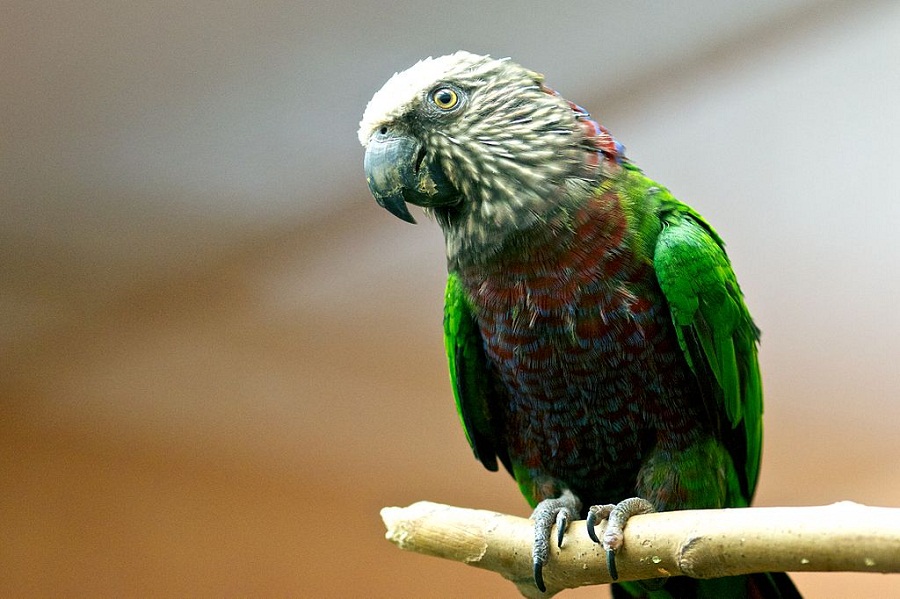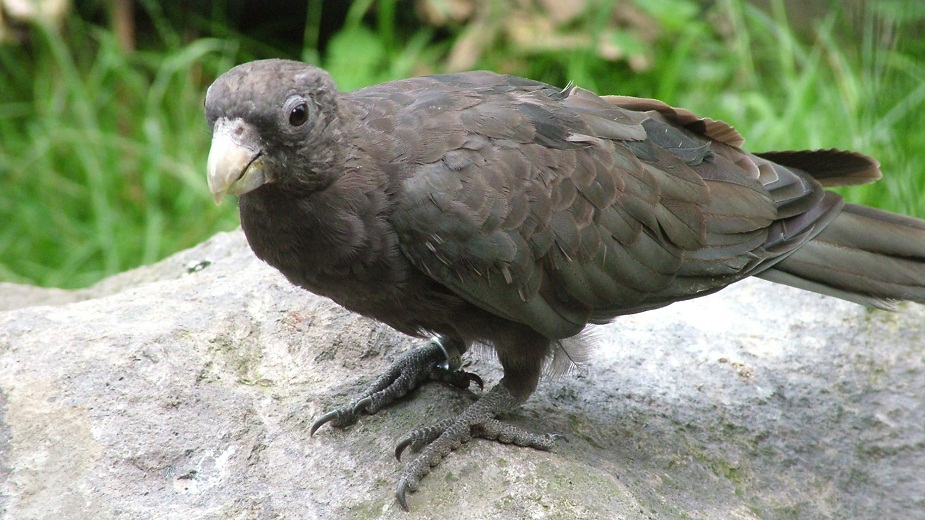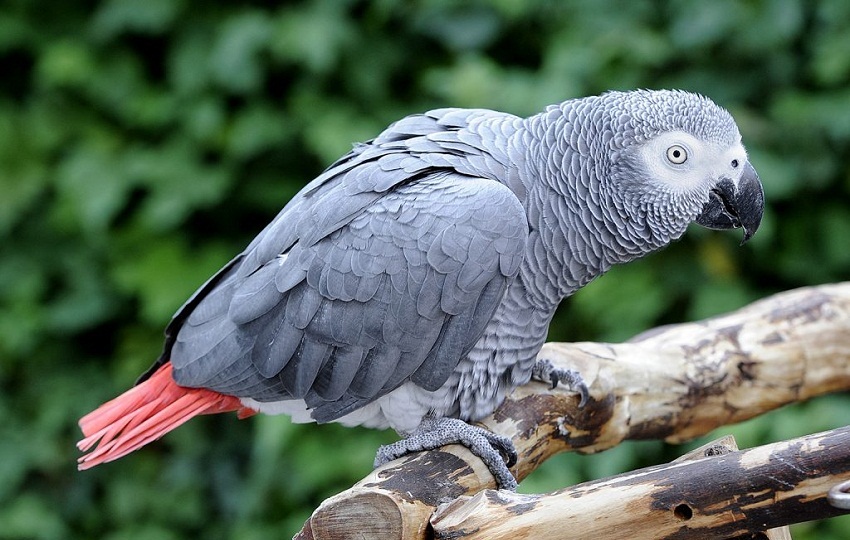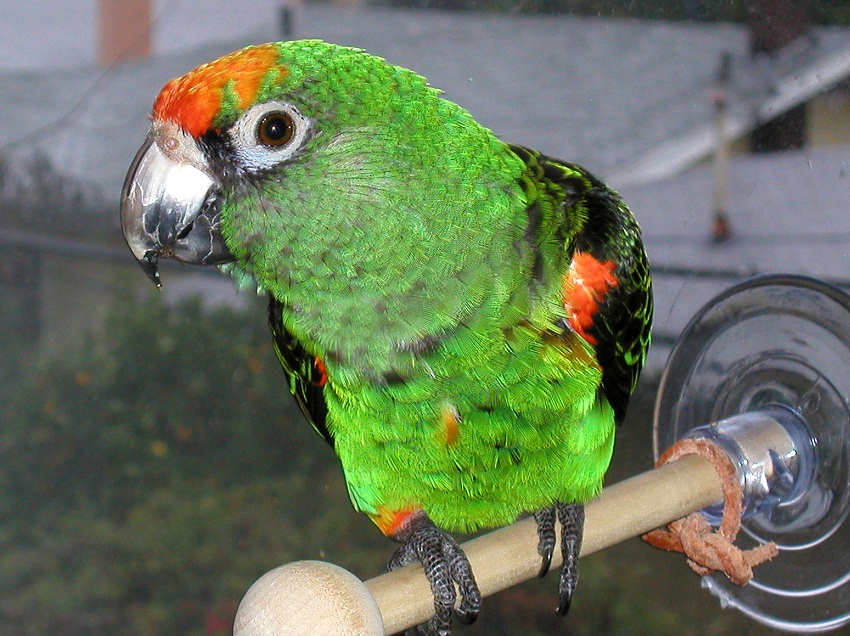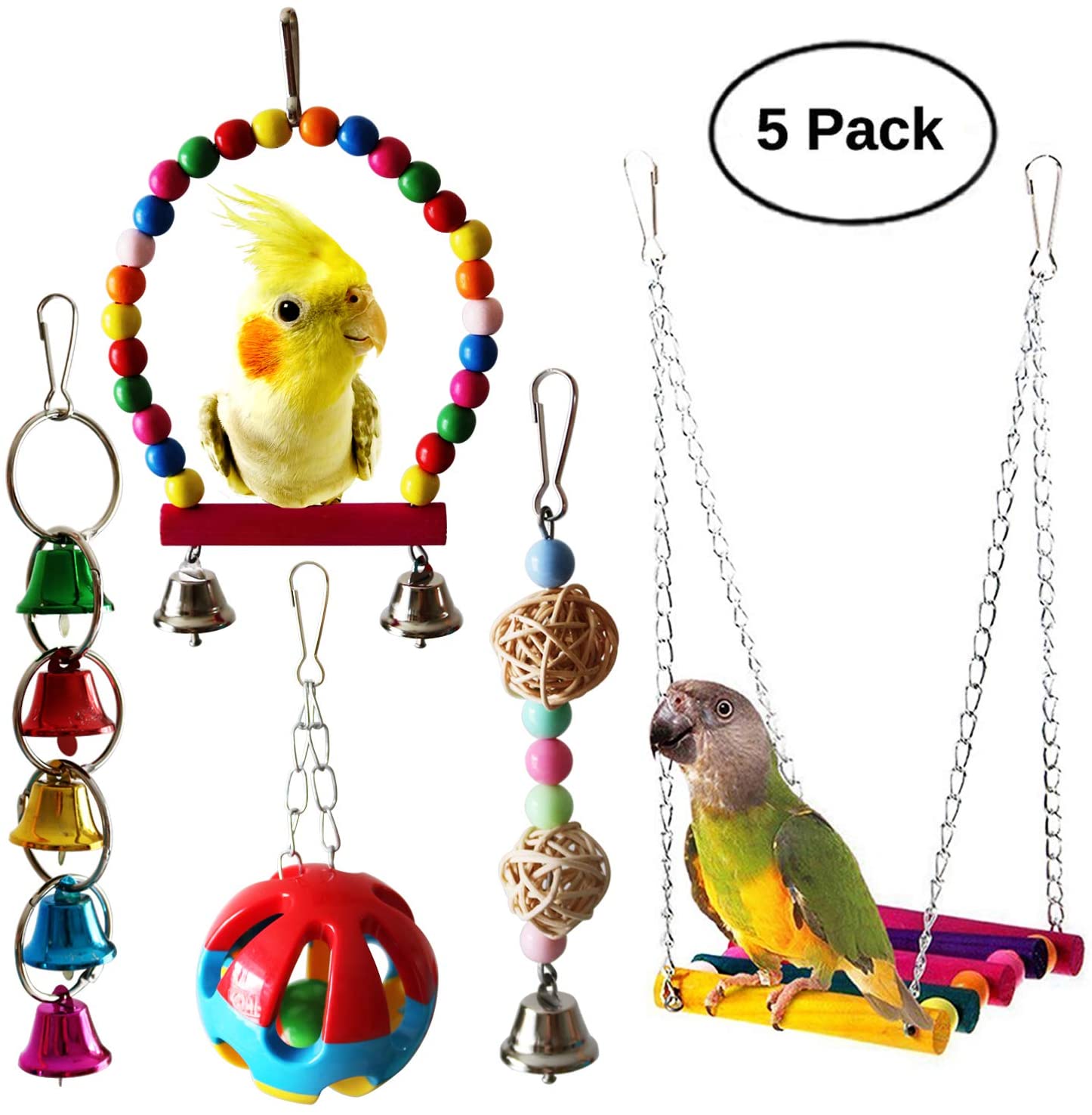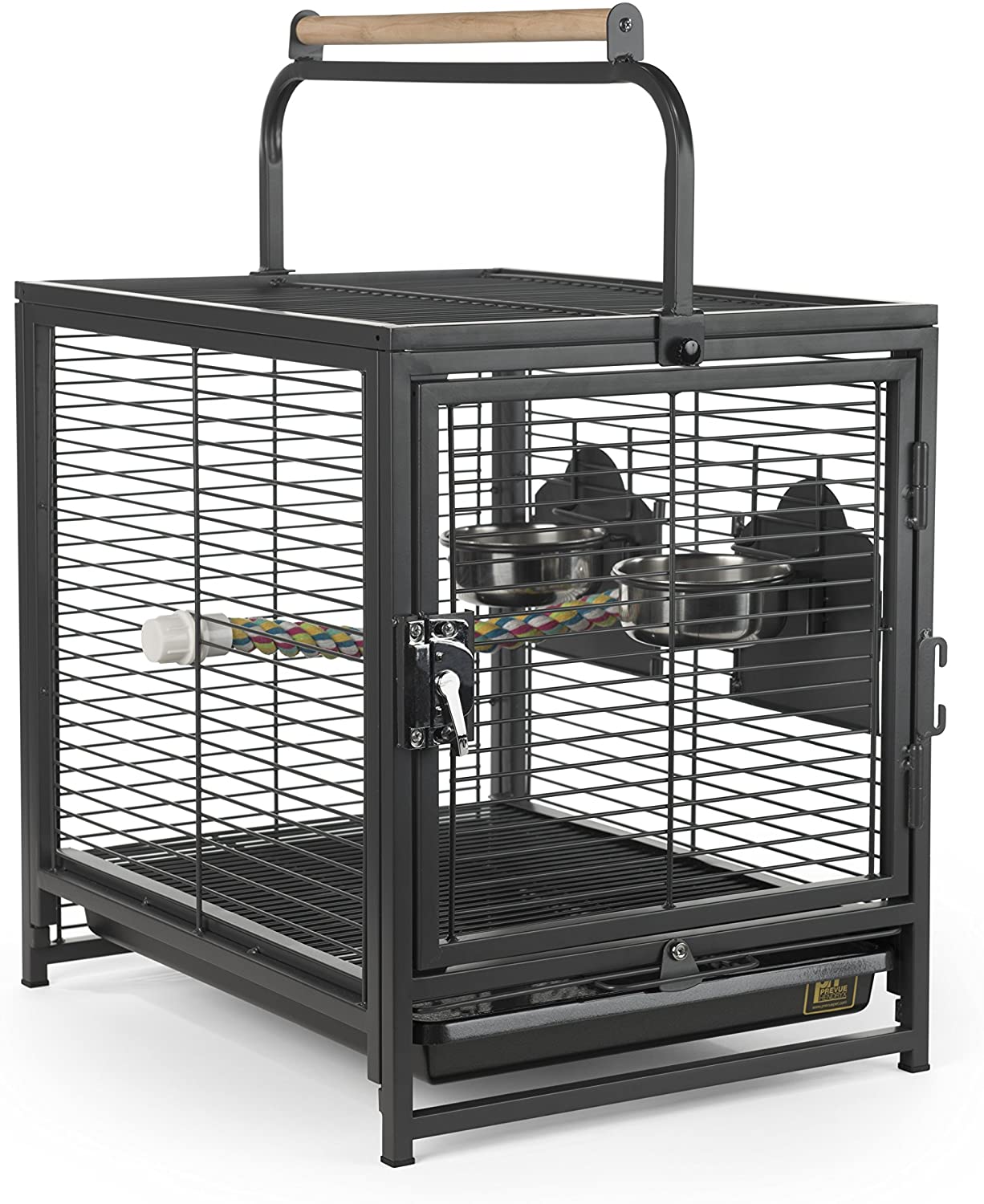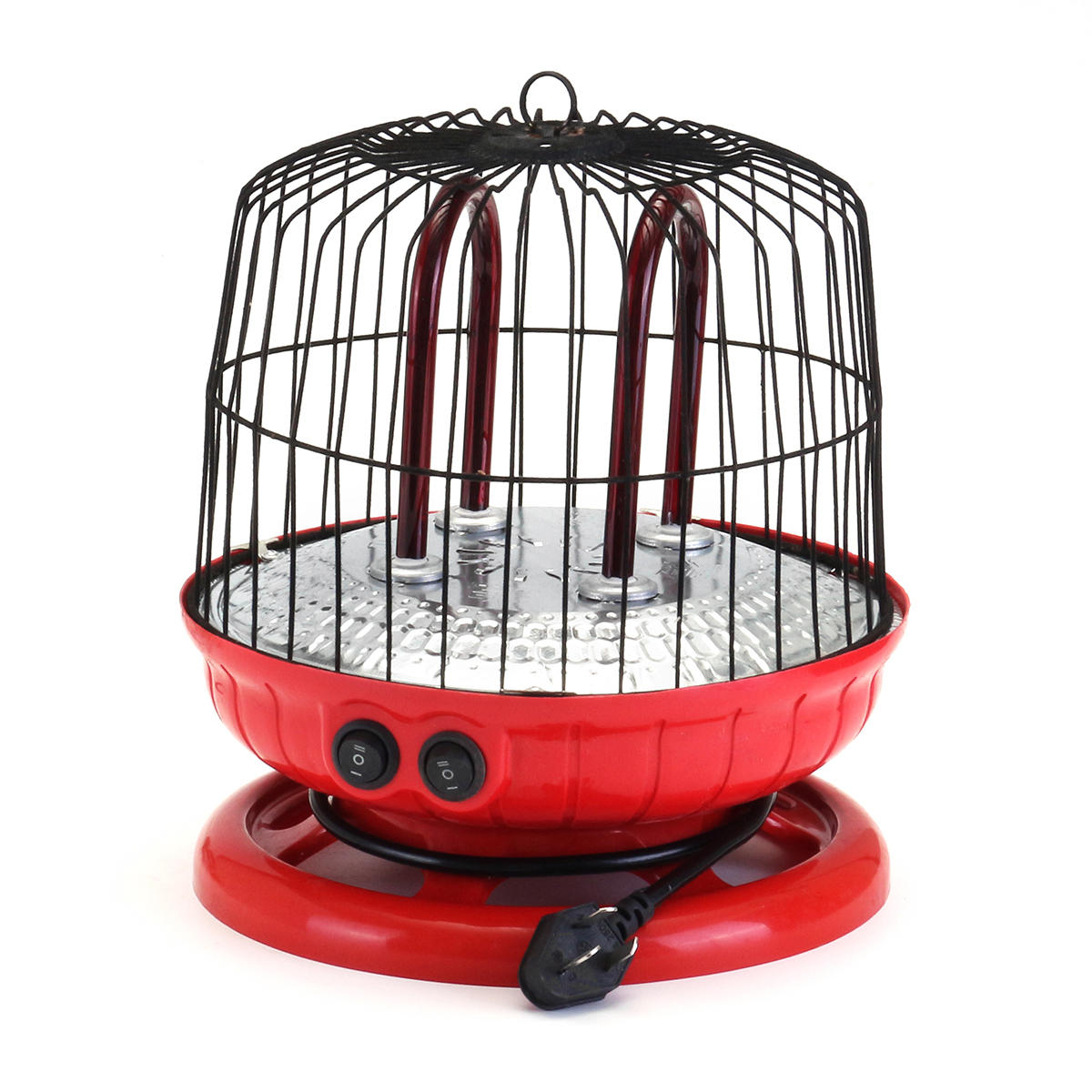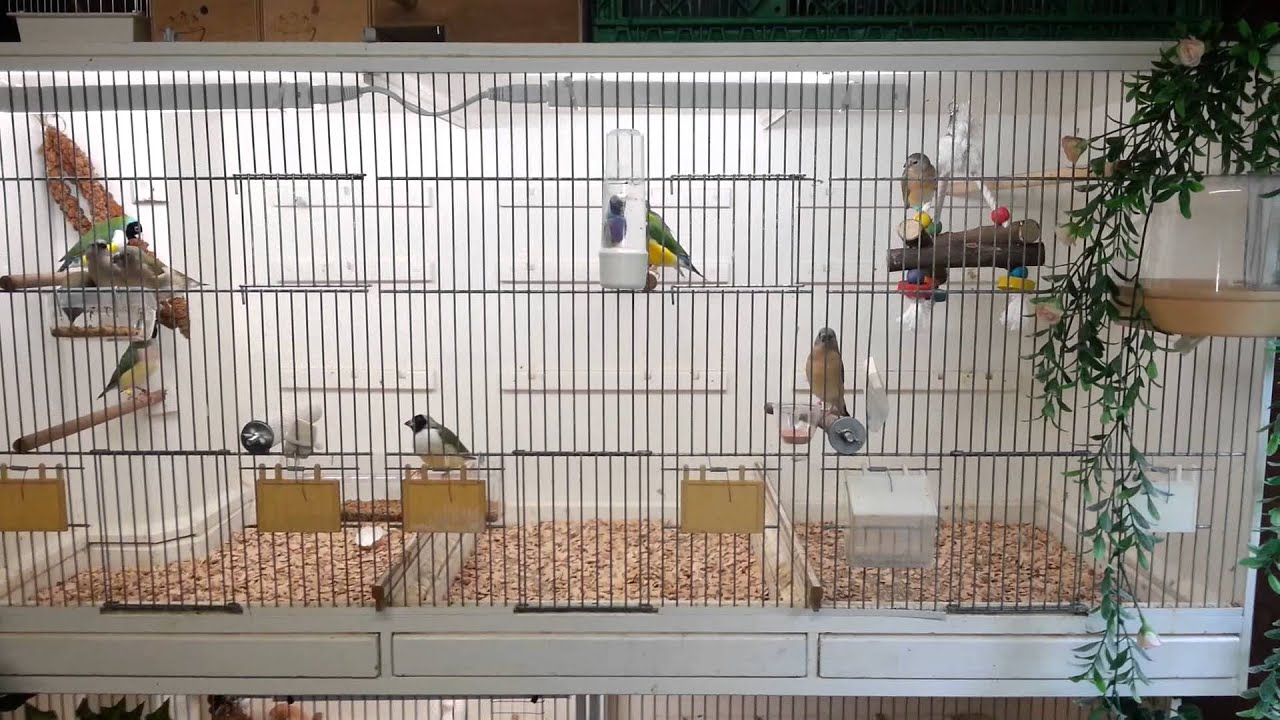Originating from West Africa, Senegal parrot has a bright green body with orange patches on the abdomen and lower breast. Male Senegal parrots are heavier than females, having characteristic yellow under-tail covert feathers, whereas females tend to have green ones.
Scientific Classification |
|
| Kingdom | Animalia |
| Phylum | Chordata |
| Class | Aves |
| Order | Psittaciformes |
| Superfamily | Psittacoidea |
| Family | Psittacidae |
| Subfamily | Psittacinae |
| Genus | Poicephalus |
| Scientific name | Poicephalus senegalus |
Quick Information |
|
| Other names | Yellow vented parrot |
| Size | Around 9-10 inches (23 -24cm) |
| Wingspan | Around 6 inches |
| Weight | 120-170 grams (4.2-6.0 0Z) |
| Color | Adults: Yellow irises, gray beak, charcoal gray head, green throat and back, yellow rump and under parts,
Babies exhibit dark gray irises |
| Distribution | West Africa, Central African Republic, Northern Cameroon |
| Habitat | Savanna, open and moist woodland |
| Sound and call | Squawks and whistles in high pitch |
| Clutch | 3-4 eggs |
| Incubation Period | 27-28 days |
| Lifespan | Around 30 years |
| Diet | Grains, seeds vegetables and herbs |
| IUCN Conservation Status | Least Concern |
Subspecies
- P. s. senegalus
- P. s. mesotypus
- P. s. versteri
As pets
The Senegal parrot makes an excellent pet due its amusing and friendly behavior.
Housing
It needs a spacious cage for flexible movements and exercise to ward off rapid weight gain. Provide an enclosure measuring 36” x 36” x 48” in dimension with a bar measuring maximum ½”. This bird is playful and a strong chewer by nature, so it is advisable to put chewable toys (preferably wooden) along with a swing. Make sure it is well exposed to natural sunlight for creating vitamin K which is good for its skin preventing feather plucking. For breeding, it requires an 18’’X10’’ nest box.
Temperature
Ensure a moderately warm temperature for your Senegal parrot.
Temperament and personality
Due to its socializing behavior, it loves human proximity. It can occasionally come out of its cage, sitting on your shoulder without causing any harm. An intelligent and endearing bird by nature, it is quick to imitate sounds and learns to talk fast. It gets attached to its owner quickly, being capable of feeling stress and jealousy, becoming aggressive if not well attended.
Feeding
Provide them with nutritious foods like white millets, hemp, soybean, carrots, broccoli, cranberries, green beans, sesame, basil leaf, peppermint leaf, carrot, and canary grass. Never give them avocado and chocolate as it may cause fatal consequence.
Care
Cleaning of the cage, food bowl, toys, and perches is required on a daily basis. Once trained well, let it out of the cage at least once in a day. It needs around ten hours of sleep per day. Regular caring includes pruning the nails and keeping the feathers clean.
Health problems
A well nurtured Senegal parrot rarely becomes sick. However, like any other bird, they have some common illnesses like feather loss, fungal infection, ruffled plumage, kidney diseases, and psittacosis. Watch out for symptoms like feather discoloration, loss of appetite and drowsiness, with immediate assistance of a licensed vet being necessary in any case.
Price
A Senegal parrot costs around $800.
Interesting facts
- It was first described in 1966 by Carl Linnaeus, a famous zoologist.
- Some hand reared Senegal parrots have been documented to live over fifty years.
- Kili, a well trained famous Senegal parrot, has featured in various television shows for showing amusing tricks.
Video: Senegal Parrot Talking
References:












